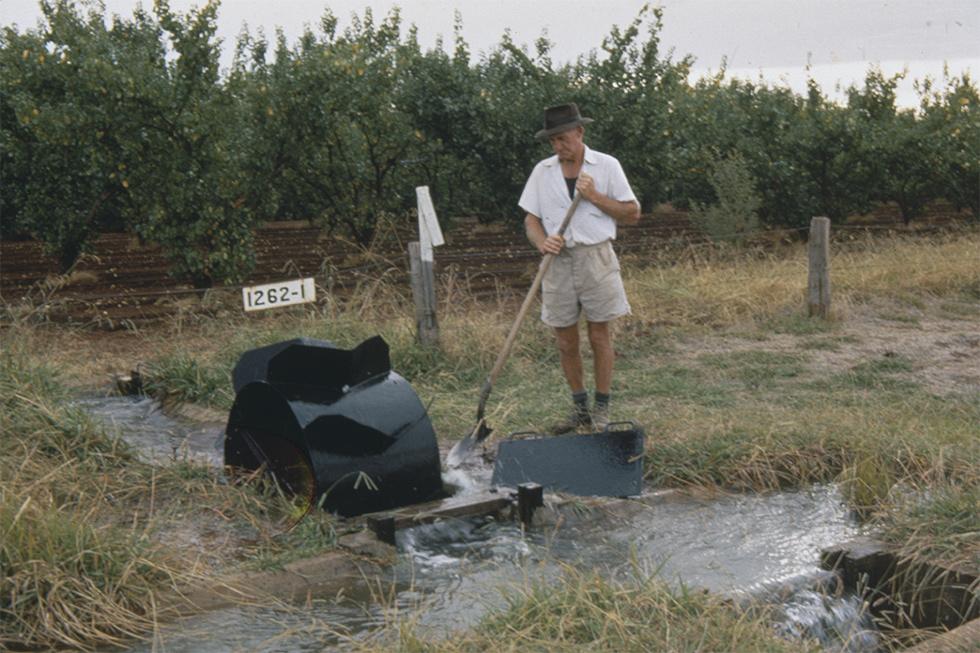


About this record
This colour photograph shows a Dethridge wheel at an outlet point on an irrigation channel at Leeton in southern New South Wales. A man holding a shovel is watching as water passes through the wheel into an orchard, which can be seen in the background.
Educational value
- The Dethridge wheel depicted accurately measures the volume of water being diverted to individual farms. It was invented in 1910 by John Stewart Dethridge, the Victorian State Rivers and Water Supply Commissioner, at a time of rapid expansion of irrigation in Australia. Dethridge wheels were heavily utilised in the Murray-Darling Basin area.
- A Dethridge wheel comprises an open-ended steel cylinder fixed inside a concrete emplacement. V-shaped vanes fixed to the outside of the cylinder cause it to turn around an axle as water flows through from a supply channel. A counting device attached to the axle measures the volume of water passing through, according to the number of revolutions of the wheel.
- The Dethridge wheel was born of a need to manage water in a sustainable manner. While the effects of irrigation on the long-term health of rivers and land quality were not fully understood in 1910, it was realised that water had to be regulated to ensure sufficient supply to farms and other water users further downstream. This meant that the amount of water made available for irrigation to individual farms needed to be controlled and therefore accurately measured.
- Dethridge wheels became extremely popular because they were relatively cheap, robust, simple to use and reasonably accurate. Around the end of the 20th century, tens of thousands were still in use in Australia and other countries including the USA, Israel and parts of Africa. In recent years, however, there has been a trend towards using more accurate electronic meters to measure water flow in irrigation systems.
- Also pictured is an example of furrow irrigation, which involves the diversion of water into ditches dug into the soil. Furrow irrigation became more efficient in the 20th century as ditches were lined with cement, earthenware or polyvinyl chloride (PVC). From the early 1960s, sprinkler and 'trickle irrigation' systems became more common. Trickle irrigation allows application of water more directly to plant roots and minimises water loss through evaporation.
- This photograph was taken at Leeton, which is in the Murrumbidgee Irrigation Area (MIA) in the Riverina region of NSW. An irrigation scheme to divert water from the Murrumbidgee River began in the early 20th century. The MIA, covering about 3,600 square kilometres, remains one of the main food production regions in Australia. The major crops include vegetables, wine grapes, rice, grain and citrus.
Acknowledgments
Learning resource text © Education Services Australia Limited and the National Archives of Australia 2010.
Related themes
Need help with your research?
Learn how to interpret primary sources, use our collection and more.




